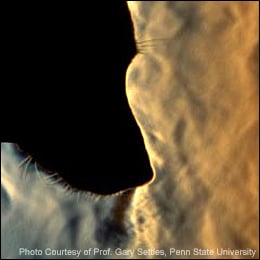When an Anchorage, Alaska nurse went missing in 2007 and was found dead six weeks later, the FBI Laboratory’s Evidence Response Team Unit (ERTU) was called in and asked to bring some experts—our specially trained human scent evidence canines Tinkerbelle, Lucy, and Casey. Following human scent trails from several places linked to the killing, the dogs kept ending up at the same location—the house of a man who lived near the victim.
The neighbor was eventually charged with the murder. In a pre-trial hearing his lawyer challenged the science behind the scent evidence and asked that it be thrown out. The judge ruled that the science was indeed sound, and fully admissible in court. Last February, the man pled guilty to the killing and was sentenced to life without parole.
Human scent evidence has been used in federal court before. However, the federal court judge’s ruling sets an important precedent—and by extension acknowledges the Bureau’s efforts to promote the highest standards when scent dogs are used in investigations.
The use of dogs by law enforcement is nothing new. Bloodhounds have traditionally been called upon to pick up the trail of fugitives and missing persons. FBI police and our special agent bomb technicians use dogs trained to sniff for explosives, and we have victim recovery dogs trained specifically to seek out the smell of blood and decomposing bodies.
But our Human Scent Evidence Team (HSET), established in 2002 and now a full-time program in the ERTU, is something of a new breed. After they are trained and certified—a process that can take two to three years—HSET dogs can help point investigators in the right direction when time and resources may be in limited supply—and their efforts may later be scrutinized in the courtroom.
Here’s how the program works:
-At the crime scene, in addition to collecting fingerprints, DNA, and other evidence, ERT technicians collect scents by using a trace evidence vacuum similar to those used for collection of hair and fibers. Human scent traces, which can be obtained from almost any object, are vacuumed onto a sterile surgical dressing and placed in an airtight glass jar (they can be stored that way for an extended period of time).
-Dogs are trained to smell the collected scent by sniffing the scent pad and indicating either a scent match or a non-match. If there is a matching trail of human odor, the dog will follow an invisible “odor highway” in the same way humans might recognize streets, roadways, and intersections.
-In most cases handlers know nothing about the cases they are called in to work. They are simply given a scent pad and asked to follow a trail if one is found.
Stockham is working with the Department of Homeland Security and other agencies to establish a uniform set of training and certification standards that would apply to all scent dogs used in investigations.







No comments:
Post a Comment